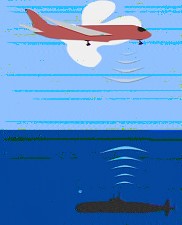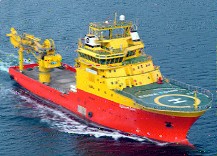http://www.rhci-online.net/radiogram/radiogram.htm
http://www.rhci-online.net/radiogram/radiogram.htm
|
RSID: <<2018-08-15T20:25Z MFSK-32 @ 6070000+1500>>
START IBC - ITALIAN BROADCASTING CORPORATION
mail: ibc@europe.com "IBC DIGITAL" Sending Pic:200x200;
Sending Pic:350x217C;
|
|
|
RSID: <<2018-08-25T15:30Z
MFSK-64 @
9400000+1500>>
A canal in Utrecht, new home of The Mighty KBC domestic service
|

RSID: <<2018-08-24T20:31Z MFSK-32 @ 7780000+1500>>
Welcome to program 62 of Shortwave Radiogram.
I'm Kim Andrew Elliott in Arlington, Virginia USA.
Here is the lineup for today's program, in MFSK modes as noted:
1:37 Program preview (now)
2:53 MFSK32: U.S. Agency for Global Media is new name for BBG*
6:28 MFSK128: New system for underwater-airborne comms*
11:56 MFSK64: Fake news detector algorithm better than human*
17:41 Cargo ship will attempt Russian Arctic voyage*
20:18 Images of the week*
28:31 MFSK32: Closing announcements
* with image(s)
Please send reception reports to
radiogram@verizon.net
And visit http://swradiogram.net
Twitter:
@SWRadiogram
U.S. Agency for Global Media press release:
New name, same mission
22 August 2018
On August 22, 2018, the Broadcasting Board of Governors changed
its name to the United States Agency for Global Media.
The new name better explains to constituents the work and
significance of the Agency and its networks.
USAGM remains committed to objective journalism. Insulated by a
firewall from political influence, its networks serve as a
credible free press in countries that lack one, while presenting
a rigorously honest picture of the U.S. around the world.
Through its international programming, USAGM supports democracy
and press freedom. It counters misinformation and propaganda. And
in doing so, it serves a vital role in U.S. public diplomacy and
national security.
https://www.usagm.gov/2018/08/22/new-name-same-mission/
Kim's note: The broadcasting entities under the BBG, now USAGM,
are Voice of America, Radio Free Europe/Radio Liberty, Radio Free
Asia, Office of Cuba Broadcasting (Radio and TV Martí), and
Middle East Broadcasting Networks (Alhurra TV and Radio Sawa,
both in Arabic).
Image: The USAGM logo ...
Sending Pic:238x108C;

Shortwave Radiogram now changes to MFSK128 ...
RSID: <<2018-08-24T20:36Z MFSK-128 @ 7780000+1500>>
This is Shortwave Radiogram in MFSK128
Please send reception reports to
radiogram@verizon.net
From Massachusetts Institute of Technology:
Wireless communication breaks through water-air barrier
In a novel system developed by MIT
researchers, underwater
sonar signals cause vibrations that
can be decoded by an
airborne receiver.
Rob Matheson
MIT News Office
22 August 2018
MIT researchers have taken a step toward solving a longstanding
challenge with wireless communication: direct data transmission
between underwater and airborne devices.
Today, underwater sensors cannoh _are data with tte on land,
as both use different wireless signals that only work in their
respective mediums. Radio signals that travel through air die
very rapidly in water. Acoustic signals, or so1t senwby
underwater devices mostly reflect off the surface without ever
breaking through. This causes inefficiencies and other issues for
a variety of applications, such as ocean exploration and
submarine-to-plane communication.
In a paper being presented at this week's SIGCOMM conference, MIT
Media Lab researchers have designed a system that tackles this
problem in a novel way. An underwater transmitter directs a sonar
signal to the water's surface, causing tiny vibrations that
correspond to the 1s and 0s transmitted. Above the surface, a
highly sensitive receiver reads these minute disturbances and
decodes the sonar signal.
"Trying to cross the air-water boundary with wireless signals has
been an obstacle. Our idea is to transform the obstacle itself
into a medium through which to communicate," says Fadel Adib, an
assistant professor in the Media Lab, who is leading this
research. He co-authored the paper with his graduate student
Francesco Tonolini.
The system, called "translational acoustic-RF communication"
(TARF), is still in its early stages, Adib says. But it
represents a "milestone," he says, that could open new
capabilities in water-air communications. Using the system,
military submarines, for instance, wouldn't need to surface to
communicate with airplanes, compromising their location. And
underwater drones that monitor marine life wouldn't need to
constantly resurface from deep dives to send data to researchers.
Another promising application is aiding searches for planes that
go missing underwater. "Acoustic transmitting beacons can be
implemented in, say, a plane's black box," Adib says. "If it
transmits a signal every once in a while, you'd be able to use
the system to pick up that signal."
Decoding vibrations
Today's technological workarounds to this wireless communication
issue suffer from various drawbacks. Buoys, for instance, have
been designed to pick up sonar waves, process the data, and shoot
radio signals to airborne receivers. But these can drift away and
get lost. Many are also required to cover large areas, making
them impracticable for, say, submarine-to-surface communications.
TARF includes an underwater acoustic transmitter that sends sonar
signals using a standard acoustic speaker. The signals travel as
pressure waves of different frequencies corresponding to
different data bits. For example, when the transmitter wants to
send a 0, it can transmit a wave traveling at 100 hertz; for a 1,
it can transmit a 200-hertz wave. When the signal hits the
surface, it causes tiny ripples in the water, only a few
micrometers in height, corresponding to those frequencies.
To achieve high data rates, the system transmits multiple
frequencies at the same time, building on a modulation scheme
used in wireless communication, called orthogonal
frequency-division multiplexing. This lets the researchers
transmit hundreds of bits at once.
Positioned in the air above the transmitter is a new type of
extremely-high-frequency radar that processes signals in the
millimeter wave spectrum of wireless transmission, between 30 and
300 gigahertz. (That's the band where the upcoming high-frequency
5G wireless network will operate.)
The radar, which looks like a pair of cones, transmits a radio
signal that reflects off the vibrating surface and rebounds back
to the radar. Due to the way the signal collides with the surface
vibrations, the signal returns with a slightly modulated angle
that corresponds exactly to the data bit sent by the sonar
signal. A vibration on the water surface representing a 0 bit,
for instance, will cause the reflected signal's angle to vibrate
at 100 hertz.
"The radar reflection is going to vary a little bit whenever you
have any form of displacement like on the surface of the water,"
Adib says. "By picking up these tiny angle changes, we can pick
up these variations that correspond to the sonar signal."
Listening to "the whisper"
A key challenge was helping the radar detect the water surface.
To do so, the researchers employed a technology that detects
reflections in an environment and organizes them by distance and
power. As water has the most powerful reflection in the new
system's environment, the radar knows the distance to the
surface. Once that's established, it zooms in on the vibrations
at that distance, ignoring all other nearby disturbances.
The next major challenge was capturing micrometer waves
surrounded by much larger, natural waves. The smallest ocean
ripples on calm days, called capillary waves, are only about 2
centimeters tall, but that's 100,000 times larger than the
vibrations. Rougher seas can create waves 1 million times larger.
"This interferes with the tiny acoustic vibrations at the water
surface," Adib says. "It's as if someone's screaming and you're
trying to hear someone whispering at the same time."
To solve this, the researchers developed sophisticated
signal-processing algorithms. Natural waves occur at about 1 or 2
hertz — or, a wave or two moving over the signal area every
second. The sonar vibrations of 100 to 200 hertz, however, are a
hundred times faster. Because of this frequency differential, the
algorithm zeroes in on the fast-moving waves while ignoring the
slower ones.
Testing the waters
The researchers took TARF through 500 test runs in a water tank
and in two different swimming pools on MIT's campus.
In the tank, the radar was placed at ranges from 20 centimeters
to 40 centimeters above the surface, and the sonar transmitter
was placed from 5 centimeters to 70 centimeters below the
surface. In the pools, the radar was positioned about 30
centimeters above surface, while the transmitter was immersed
about 3.5 meters below. In these experiments, the researchers
also had swimmers creating waves that rose to about 16
centimeters.
In both settings, TARF was able to accurately decode various data
— such as the sentence, "Hello! from underwater" — at hundreds of
bits per second, similar to standard data rates for underwater
communications. "Even while there were swimmers swimming around
and causing disturbances and water currents, we were able to
decode these signals quickly and accurately," Adib says.
In waves higher than 16 centimeters, however, the system isn't
able to decode signals. The next steps are, among other things,
refining the system to work in rougher waters. "It can deal with
calm days and deal with certain water disturbances. But [to make
it practical] we need this to work on all days and all weathers,"
Adib says.
"TARF is the first system that demonstrates that it is feasible
to receive underwater acoustic transmissions from the air using
radar," says Aaron Schulman, an assistant professor of computer
science and engineering at the University of California at San
Diego. "I expect this new radar-acoustic technology will benefit
researchers in fields that depend on underwater acoustics (for
example, marine biology), and will inspire the scientific
community to investigate how to make radar-acoustic links
practical and robust."
The researchers also hope that their system could eventually
enable an airborne drone or plane flying across a water's surface
to constantly pick up and decode the sonar signals as it zooms
by.
The research was supported, in part, by the National Science
Foundation.
http://news.mit.edu/2018/wireless-communication-through-water-air-0822
Image: Screen capture from the accompanying video ...
Sending Pic:182x225C;

Shortwave Radiogram now changes to MFSK64 ...
RSID: <<2018-08-24T20:42Z MFSK-64 @ 7780000+1500>>
This is Shortwave Radiogram in MFSK64
Please send reception reports to
radiogram@verizon.net
From the University of Michigan:
Fake news detector algorithm works better than a human
Gabe Cherry
22 August 2018
An algorithm-based system that identifies telltale linguistic
cues in fake news stories could provide news aggregator and
social media sites like Google News with a new weapon in the
fight against misinformation.
The University of Michigan researchers who developed the system
have demonstrated that it's comparable to and sometimes better
than humans at correctly identifying fake news stories.
In a recent study, it successfully found fakes up to 76 percent
of the time, compared to a human success rate of 70 percent. In
addition, their linguistic analysis approach could be used to
identify fake news articles that are too new to be debunked by
cross-referencing their facts with other stories.
Rada Mihalcea, the U-M computer science and engineering professor
behind the project, said an automated solution could be an
important tool for sites that are struggling to deal with an
onslaught of fake news stories, often created to generate clicks
or to manipulate public opinion.
Catching fake stories before they have real consequences can be
difficult, as aggregator and social media sites today rely
heavily on human editors who often can't keep up with the influx
of news. In addition, current debunking techniques often depend
on external verification of facts, which can be difficult with
the newest stories. Often, by the time a story is proven a fake,
the damage has already been done.
Linguistic analysis takes a different approach, analyzing
quantifiable attributes like grammatical structure, word choice,
punctuation and complexity. It works faster than humans and it
can be used with a variety of different news types.
"You can imagine any number of applications for this on the front
or back end of a news or social media site," Mihalcea said. "It
could provide users with an estimate of the trustworthiness of
individual stories or a whole news site. Or it could be a first
line of defense on the back end of a news site, flagging
suspicious stories for further review. A 76 percent success rate
leaves a fairly large margin of error, but it can still provide
valuable insight when it's used alongside humans."
Linguistic algorithms that analyze written speech are fairly
common today, Mihalcea said. The challenge to building a fake
news detector lies not in building the algorithm itself, but in
finding the right data with which to train that algorithm.
Fake news appears and disappears quickly, which makes it
difficult to collect. It also comes in many genres, further
complicating the collection process. Satirical news, for example,
is easy to collect, but its use of irony and absurdity make it
less useful for training an algorithm to detect fake news that's
meant to mislead.
Ultimately, Mihalcea's team created its own data, crowdsourcing
an online team that reverse-engineered verified genuine news
stories into fakes. This is how most actual fake news is created,
Mihalcea said, by individuals who quickly write them in return
for a monetary reward.
Study participants, recruited with the help of Amazon Mechanical
Turk, were paid to turn short, actual news stories into similar
but fake news items, mimicking the journalistic style of the
articles. At the end of the process, the research team had a
dataset of 500 real and fake news stories.
They then fed these labeled pairs of stories to an algorithm that
performed a linguistic analysis, teaching itself distinguish
between real and fake news. Finally, the team turned the
algorithms to a dataset of real and fake news pulled directly
from the web, netting the 76 percent success rate.
The details of the new system and the dataset that the team used
to build it are freely available, and Mihalcea says they could be
used by news sites or other entities to build their own fake news
detection systems. She says that future systems could be further
honed by incorporating metadata such as the links and comments
associated with a given online news item.
A paper detailing the system will be presented Aug. 24 at the
27th International Conference on Computational Linguistics in
Santa Fe, N.M. Mihalcea worked with U-M computer science and
engineering assistant research scientist Veronica Perez-Rosas,
psychology researcher Bennett Kleinberg at the University of
Amsterdam and U-M undergraduate student Alexandra Lefevre.
The paper is titled "Automatic detection of Fake News." The
research was supported by U-M's Michigan Institute for Data
Science and by the National Science Foundation (grant number
1344257).
http://eecs.umich.edu/eecs/about/articles/2018/fake-news.html
Image: The spiral staircase in the Beyster Building, home of the
Computer Science Engineering program at the University of
Michigan in Ann Arbor ...
Sending Pic:152x227C;

This is Shortwave Radiogram
Please send reception reports to
radiogram@verizon.net
From Radio Free Europe/Radio Liberty:
World's Biggest Shipping Firm To Test Route Through Russian
Arctic
23 August 2018
The world's biggest shipping firm says it is preparing to send a
cargo vessel through the Russian Arctic for the first time – a
voyage made possible by melting sea ice.
Janina von Spalding, a spokeswoman for Denmark's A.P.
Moller-Maersk, said on August 23 that the newly designed vessel
would embark on "a one-off trial designed to explore an unknown
route for container shipping."
Von Spalding said the ship will leave Russia's Pacific port city
of Vladivostok around September 1 and was due to arrive in St.
Petersburg by the end of September.
Experts say the Northern Sea Route could be a shorter journey
from East Asia to Europe than the Northwest Passage over Canada
because it will likely be free of ice sooner in the year due to
climate change.
Based on reporting by AP and CNBC
https://www.rferl.org/a/world-s-biggest-shipping-firm-to-test-route-russian-arctic/29449170.html
See also:
https://www.americanshipper.com/main/full/maersk-testing-arctic-waters-72338.aspx
Image: The Venta Maersk will travel from Vladivostok to St.
Petersburg on its maiden voyage ...
Sending Pic:226x119C;

This is Shortwave Radiogram
Please send reception reports to
radiogram@verizon.net
IMAGES OF THE WEEK
Image: This dive and hydrographic support vessel for the Royal
New Zealand Navy was rcently purchased from the Norwegian
company Østensjø Rederi. From
bit.ly/2Pyxy7i ...
Sending Pic:217x156C;

Image: Like an aurora, but actually a Strong Thermal Emission
Velocity Enhancement (STEVE) seen in British Columbia. From
bit.ly/2w7IzUY ...
Sending Pic:229x143C;
Image: A cowboy drives a herd of cattle in Mexico's Juarez
Valley. From
bit.ly/2P0HQfu ...
Sending Pic:131x226C;

Image: Our painting of the week is a landscape by William Julian
Kaula, early 20th century. From
bit.ly/2PxEv8A and
bit.ly/2Mtz4JX
...
Sending Pic:216x179C;
 https://tinyurl.com/y9mskllz
https://tinyurl.com/y9mskllz
Shortwave Radiogram now returns to MFSK32 ...
|
Geoblocking to the European Union: |
|
|
|
|
RSID: <<2018-08-24T20:58Z MFSK-32 @ 7780000+1500>>
This is Shortwave Radiogram in MFSK32 ...
Transmission of Shortwave Radiogram is provided by:
WRMI, Radio Miami International, http://wrmi.net
and
Space Line, Bulgaria, http://spaceline.bg
Please send reception reports to
radiogram@verizon.net
And visit http://swradiogram.net
Twitter:
@SWRadiogram
I'm Kim Elliott. Please join us for the next Shortwave
Radiogram.
|
Ending song: https://www.midomi.com/index.php?action=main.track&track_id=100523986895103008&from=voice_search The Beatles - Yellow Submarine |
http://www.rhci-online.net/radiogram/radiogram.htm
|
QTH: |
D-06193 Petersberg (Germany/Germania) |
|
|
Ant.: |
Dipol for 40m-Band & Boomerang Antenna 11m-Band |
|
|
RX for RF: |
FRG-100B + IF-mixer & ICOM IC-R75 + IF-mixer |
|
|
Software IF: |
con STUDIO1 - Software italiano per SDR [S-AM-USB/LSB] + beta 11 Version 2.80 (August 21, 2018) - for scheduled IF-recording |
|
|
Software AF: |
Fldigi-4.0.18 + flmsg-4.0.7 images-fldigifiles on homedrive.lnk |
|
|
OS: |
German XP-SP3 with support for asian languages |
German W7 32bit + 64bit |
|
PC: |
MEDION Titanium 8008 (since 2003) [ P4 - 2,6 GHz] |
MSI-CR70-2MP345W7 (since2014) [i5 -P3560 ( 2 x 2,6GHz) ] |



RSID: <<2018-08-22T18:32Z MFSK-64 @ 6070000+1500>>
This is Slow Scan Radio episode 5.
We have mainly SSTV today. We have some larger pictures, because I had a lot of
response saying that the smaller pictures often do not work very well. So today
it is mainly PD90, several PD120 and one PD180 image.
Since almost all SSTV programs switch modes automatically, we won’t send a list
in advance anymore. After the images we do the info on contents and copyright
again in PSK63R with 20 carriers.
Right after this we will have a small selection of ham news, also in PSK63R with
20 carriers.
de k
RSID: <<2018-08-22T18:33Z 20xPSK63R @ 6070000+1500>>
Last updated on: Wednesday, August
22, 2018
Venezuela earthquake: Ham Radio activation
On August 21, 2018, at 21:31:40 UTC, an earthquake of 6.9 Richter, on the coasts
of Venezuela was reported.
Karl Hleftschar, YV5YA, National Director of the National Emergency Network of
the Radio Club Venezolano, reported that the YV5RNE Network is active on the
7088 kHz frequency.
Jose Rafael Gomez, YV1GEC, lives in the Isla de Margarita, Venezuela; He
commented that the earthquake felt strong, and until now, there has been no
interruption of the electric power, or interruption of the gas service.
Roberto Rey, HK3CW, President of La Liga Colombiana de Radio Amadores, reported
that in Colombia, "he felt even in Bogota ... very prolonged."
It is requested to keep the frequency 7088 kHz, and close free of interference.
(Information from Cesar Pio Santos, HR2P EMCOR IARU R2)
Source IARU Region-1 http://iaru-r1.org/
(source: southgatearc.org)
Concern Rising within Amateur Radio Community over WWV-WWVH Shut Down Proposal
08/21/2018
ARRL members and Amateur Radio clubs are expressing increased concern over the
inclusion of WWV and WWVH on a list of proposed cuts in the White House’s
National Institute of Standards and Technology (NIST) Fiscal Year 2019 budget
request. The proposed cuts also
would include the Atomic Clock signal from WWVB used to synchronize specially
equipped clocks and watches. Online petitions soliciting signatures include one
established by Tom Kelly II, W7NSS, of Portland, Oregon, who would like to see
funding for the stations
maintained. At this point, the budget item is only a proposal, not a final
decision. That would be up to the Congress to decide.
ARRL is among those worried over the possible loss of WWV, WWVH, and WWVB and is
suggesting that members of the Amateur Radio community who value the stations
for their precise time and frequency signals and other information sign Kelly's
petition and/or contact
their members of Congress promptly, explaining how the stations are important to
them, beyond government and military use.
Kelly’s petition, which may be signed by US residents, notes that WWV is among
the oldest radio stations in the US, having been established in 1920. “The
station has transmitted the official US time for nearly 100 years, and is an
instrumental part in the telecommuni
cations field, ranging from broadcasting to scientific research and education,”
his petition says. “Additionally, these stations transmit marine storm warnings
from the National Weather Service, GPS satellite health reports, and specific
information concerning
current solar activity and radio propagation conditions. These broadcasts are an
essential resource to the worldwide communications industry.”
NIST’s full Fiscal Year (FY) 2019 budget request to Congress calls for the
agency to “discontinue the dissemination of the US time and frequency via the
NIST radio stations in Hawaii and Fort Collins, Colorado.” The agency noted,
“These radio stations transmit
signals that are used to synchronize consumer electronic products like wall
clocks, clock radios, and wristwatches, and may be used in other applications
like appliances, cameras, and irrigation controllers.” The specific cut, which
would come from the NIST Fundament
al Measurement, Quantum Science, and Measurement Dissemination budget, would
amount to $6.3 million.
(source: arrl.org, article is shortened by the last 40%)
Last updated on: Wednesday, August 22, 2018
Radio interference from consumer devices raised in Bundestag
German magazine Radioszene reports the issue of electromagnetic interference
from consumer devices, e.g. switched-mode PSU's and LED lighting, is being
raised in the Bundestag (Federal Parliament)
Bundestag Member Ralph Lenkert of the political party Die Linke (The Left) has
submitted 21 questions on "Protection of the resource electromagnetic
environment" to the Federal Government.
The Federal Government is expected to provide answers about the state of the
electromagnetic environment.
The questions include (Google translation):
• What is the Federal Government's knowledge of general development of
"Human-made Noise" (unwanted electromagnetic noise) in the field of shortwave,
the VHF range, in DAB applications and in particular in the field of amateur
radio service respectively in rural and
urban areas (please for each application individually describe)?
• The federal government shares the concern that the electromagnetic environment
with the implementation of the DOCSIS 3.1 method in insufficiently shielded
Cable networks due to broadband radiated Electromagnetic Interference on FM, DAB
and frequencies of the
Amateur Radio Service as well as radio applications no longer as intended Will
be available (please explain)?
359/5000
• In view of the reports in its report (see
http://www.teltarif.de/radio-kabel-internet-stoerungen/news/63267.html or CQ
DL amateur radio magazine, Issue 5-2018) in the implementation of the DOCSIS
3.1.-method a general monitoring about the condition of the affected
cable networks?
If not, why not?
• Electronic devices whose distribution has been prohibited
• The number of personnel with which the testing and measuring tasks are carried
out at the Federal Network Agency
Read the Radioszene article in Google English at
https://tinyurl.com/Radioszene-EMI-Bundestag
Original text in German
https://www.radioszene.de/124771/radio-empfang-gestoert.html
Die Linke Bundestag submission - Protection of resource electromagnetic
environment
https://dip21.bundestag.de/dip21/btd/19/036/1903641.pdf
de k
RSID: <<2018-08-22T18:55Z 20xPSK63R @ 6070000+1500>>
PD90
The high wheel came about in 1870. Riding the high wheel was banned very soon
because of the high fall height.
Copyright: Creative Commons Attribution-Share Alike 4.0 International license.
Author: W. Bulach
PD90
Museum Königs Wusterhausen (near Berlin)
Copyright: PA3CAS
PD90
Museum Königs Wusterhausen (near Berlin)
Copyright: PA3CAS
PD120
Museum Königs Wusterhausen (near Berlin)
Copyright: PA3CAS
PD90
Museum Königs Wusterhausen (near Berlin)
Copyright: PA3CAS
PD120
Miami Dolphins' cheerleaders entertained Soldiers, Sailors, Marines and Airmen
on
a tour of the area. They performed a few dance routines and signed autographs
for the
troops.
Copyright: Public domain
PD90
A Brightly lit shot of the new Mamod SP8 toy steam engine
Copyright: Creative Commons Attribution-Share Alike 3.0 Unported license.
Author: Spokessmann
PD120
Cat Martine with pet animal
Copyright: own work
PD90
Nijlânnermolen (Nyland wind mill) nearj Workum in the Dutch province of Frysia.
Copyright: Creative Commons CC0 1.0 Universal Public Domain. Author: Gouwenaar
PD90
Kaliningrad Dom Sowjetow (House of the Sowjets in Kaliningrad.
Copyright: Creative Commons Attribution-Share Alike 3.0 Unported license.
Author: Julian Nitzsche
PD180
The famous Lighthouse (Paard van Marken "Marken horse") near the village of
Marken, in the Netherlands.
Copyright: Creative Commons Attribution-Share Alike 3.0 Unported license.
Author: Fijnlijn
de k